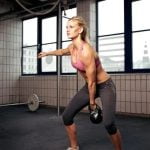Do leg exercises improve overall fitness? Regular exercise is essential for maintaining overall fitness, and in this article, we will explore the specific benefits of incorporating leg exercises into your fitness routine.
From increased strength and endurance to improved cardiovascular health, we will delve into the various ways in which focusing on leg exercises can positively impact your overall fitness levels. Additionally, we will discuss the different types of leg exercises, their impact on muscle groups, and how they contribute to injury prevention and improved physical performance.
One of the key aspects of achieving overall fitness is the inclusion of targeted exercises that address different areas of the body. Leg exercises play a crucial role in this aspect as they offer a wide range of benefits that extend beyond just building strong legs. By understanding the significance of leg exercises in enhancing overall fitness, individuals can design a comprehensive workout routine that promotes holistic wellness.
In this blog post, we aim to provide valuable insights into the importance of prioritizing leg exercises for overall fitness improvement. From identifying effective types of leg exercises to understanding their impact on cardiovascular health and injury prevention, our goal is to equip readers with the knowledge needed to optimize their fitness routines. Join us as we uncover the power of leg exercises in elevating your overall physical wellness.
Benefits of Leg Exercises
Leg exercises play a crucial role in improving overall fitness by targeting some of the body’s largest muscle groups. One of the key benefits of incorporating leg exercises into a fitness routine is improved strength. Engaging in exercises like squats, lunges, and deadlifts helps to strengthen the quadriceps, hamstrings, glutes, and calf muscles, which are essential for supporting daily movements and activities. Building strength in these muscle groups can also contribute to better posture and overall physical performance.
In addition to strength improvement, leg exercises also work to enhance endurance. These exercises require significant energy output from the body, which can lead to greater stamina over time. As leg muscles become stronger and more conditioned through regular exercise, individuals may notice an increase in their ability to sustain physical activity for longer periods. This is particularly beneficial for activities like running, cycling, or hiking where endurance plays a vital role.
Furthermore, leg exercises contribute to better balance and stability. Strong leg muscles are essential for maintaining balance and stability during various movements and exercises. By targeting these muscle groups through specific exercises like calf raises or single-leg squats, individuals can improve their body’s ability to stay steady on their feet and reduce the risk of falls or injuries.
| Benefit | Detail |
|---|---|
| Improved Strength | Strengthening quadriceps, hamstrings, glutes and calf muscles. |
| Enhanced Endurance | Increase stamina for sustained physical activity. |
| Better Balance and Stability | Reduced risk of falls or injuries through stronger leg muscles. |
Types of Leg Exercises
Leg exercises are an essential component of any well-rounded fitness routine, as they target and strengthen some of the largest muscles in the body. In this section, we will explore different types of leg exercises and their effectiveness for improving overall fitness.
Squats
Squats are a versatile exercise that can be performed using just your body weight or with added resistance such as dumbbells or barbells. They primarily target the quadriceps, hamstrings, and glutes, helping to improve lower body strength, endurance, and overall muscle tone. Additionally, squats also engage the core muscles for stabilization and balance.
Lunges
Lunges are another effective leg exercise that work multiple muscle groups simultaneously. They primarily target the quadriceps, hamstrings, and glutes while also engaging the calf muscles for stability. Lunges can be performed in various directions – forward, reverse, lateral – providing a comprehensive lower body workout that helps improve strength, balance, and coordination.
Deadlifts
Deadlifts are a compound exercise that targets the hamstrings, glutes, lower back, and core muscles. They are effective for developing overall strength in the posterior chain – a group of muscles including the glutes, hamstrings, and lower back – which is crucial for activities such as running, jumping, or lifting objects. Deadlifts also help improve grip strength and posture while promoting overall muscle growth.
Calf Raises
Calf raises specifically target the calf muscles (gastrocnemius and soleus) in the lower legs. They are beneficial for improving ankle stability and lower leg strength which is essential for activities like running and jumping. Calf raises can be performed with body weight only or with added resistance using weights or machines to enhance their effectiveness.
Incorporating these various types of leg exercises into your fitness routine can significantly contribute to improved overall fitness by enhancing strength, endurance, balance,and cardiovascular health. Whether you’re a beginner or experienced athlete, including these exercises into your workouts can lead to better physical performance and reduced risk of injury.
Impact on Cardiovascular Health
Leg exercises play a significant role in promoting cardiovascular health and enhancing overall fitness levels. Here’s how leg exercises impact your heart health and contribute to your fitness:
- Increased Heart Rate: Leg exercises such as squats, lunges, and deadlifts require large muscle groups to work, which in turn increases the demand for oxygenated blood. This leads to an elevated heart rate during the workout, effectively improving cardiovascular endurance over time.
- Better Blood Circulation: Engaging in leg exercises helps improve blood circulation throughout the body. Stronger leg muscles assist in pushing the blood back up to the heart against gravity, reducing the risk of circulatory issues.
- Calorie Burning: Leg exercises are known for their ability to burn a significant amount of calories due to the involvement of major lower body muscles. By incorporating these exercises into your routine, you can effectively manage weight and reduce the risk of cardiovascular diseases linked to obesity.
In addition to these benefits, leg exercises also aid in lowering blood pressure and improving cholesterol levels. The overall impact on cardiovascular health not only boosts fitness levels but also reduces the risk of developing chronic conditions such as heart disease. It’s important to include a variety of leg exercises in your fitness routine to fully maximize their cardiovascular benefits and improve overall fitness.
Ultimately, by prioritizing leg exercises and incorporating them consistently into your workouts, you can significantly enhance your overall cardiovascular health while improving your fitness levels. Whether it’s through bodyweight squats or weighted lunges, focusing on strengthening and conditioning your legs will ultimately benefit your heart health and contribute to an improved state of fitness.
Muscle Groups Targeted
Leg exercises are an essential component of any well-rounded fitness routine, as they target multiple muscle groups, contributing to overall strength, endurance, and balance. One primary muscle group targeted by leg exercises is the quadriceps, located on the front of the thighs. Strengthening the quadriceps through exercises like squats and lunges can significantly improve knee stability and functional movement.
Another important muscle group targeted by leg exercises is the hamstrings, located on the back of the thighs. Strong hamstrings are crucial for everyday movements such as walking and bending, as well as for athletic activities like running and jumping. Deadlifts and hamstring curls are effective exercises for targeting this muscle group.
In addition to the quadriceps and hamstrings, leg exercises also work the calf muscles, which are important for lower-body strength and power. Calf raises and box jumps are great examples of exercises that specifically target the calf muscles. Strengthening these muscle groups through targeted leg exercises not only improves overall fitness but also reduces the risk of injury during physical activities.
Overall, targeting these specific muscle groups through leg exercises can have a significant impact on improving overall fitness levels. It not only enhances muscular strength and endurance but also promotes better balance and coordination, making daily activities easier and reducing the risk of falls or injuries. Incorporating a variety of leg exercises into a fitness routine is crucial for achieving optimal results in improving overall fitness and physical performance.
| Muscle Group Targeted | Effective Leg Exercises |
|---|---|
| Quadriceps | Squats, Lunges |
| Hamstrings | Deadlifts, Hamstring Curls |
| Calf Muscles | Calf Raises, Box Jumps |
Injury Prevention
Strengthening Muscles and Joints
Performing leg exercises can help prevent injuries by strengthening the muscles and joints in the lower body. When these muscles are strong, they provide better support and stability to the knees, ankles, and hips, reducing the risk of sprains and strains during physical activities. Stronger leg muscles also help to absorb impact from activities such as running or jumping, decreasing the likelihood of overuse injuries.
Improving Balance and Coordination
Leg exercises are essential for improving balance and coordination, which are crucial for preventing falls and maintaining overall physical performance. By incorporating exercises that target stability, such as single-leg squats or balancing on one foot, individuals can enhance their proprioception – the body’s ability to sense its position in space – and reduce the risk of tripping or stumbling during everyday movements.
Preventing Overcompensation
When certain muscle groups are weak or underdeveloped, other muscles may compensate for their lack of strength, leading to uneven muscle development and an increased risk of injury. Leg exercises help to address muscle imbalances by targeting various muscle groups in the lower body, promoting a more symmetrical distribution of strength and reducing the likelihood of overcompensation-related injuries.
Additionally, a well-rounded leg exercise routine can also contribute to better posture and alignment, further lowering the chance of injury during physical activities.
Incorporating Leg Exercises Into a Fitness Routine
When it comes to improving overall fitness, incorporating leg exercises into your fitness routine is crucial. Not only do these exercises help in developing lower body strength, but they also have a positive impact on cardiovascular health and can prevent injuries. Here are some tips and advice on how to effectively include leg exercises in your fitness routine for maximum effectiveness:
1. Start with the basics: If you’re new to leg exercises, start with simple bodyweight movements such as squats, lunges, and calf raises. These exercises can be done anywhere and are a great way to build a foundation for more advanced workouts.
2. Mix it up: Don’t get stuck in a rut doing the same leg exercises over and over again. Mix up your routine by incorporating different types of leg exercises such as deadlifts, step-ups, and leg presses. This variety will not only keep your workouts interesting but also ensure that all muscle groups in your legs are being targeted.
3. Use proper form: When performing leg exercises, it’s important to use proper form to avoid injury and maximize effectiveness. Focus on maintaining good posture, keeping your knees aligned with your toes, and engaging your core throughout the movements.
4. Add resistance: As you progress in your fitness journey, consider adding resistance to your leg exercises using dumbbells, barbells, or resistance bands. This added challenge will help further strengthen your muscles and improve overall fitness levels.
By incorporating these tips into your fitness routine, you can ensure that you are getting the most out of your leg exercises and working towards improving your overall fitness in a safe and effective manner.
Conclusion
In conclusion, it is evident from the discussion in this blog post that leg exercises play a crucial role in improving overall fitness. The benefits of leg exercises are numerous and include improved strength, endurance, balance, and cardiovascular health. By targeting specific muscle groups in the legs, such as the quadriceps, hamstrings, and calves, these exercises contribute to enhanced physical performance and injury prevention.
Furthermore, the various types of leg exercises, such as squats, lunges, deadlifts, and calf raises, offer a diverse range of options for individuals to incorporate into their fitness routines. Whether it’s at home or at the gym, there are numerous ways to engage in leg exercises and reap the associated benefits. Additionally, by including leg exercises in a well-rounded fitness routine, individuals can maximize their overall fitness improvement while reducing the risk of injuries during physical activities.
It is important for individuals to recognize the significance of incorporating leg exercises into their regular exercise regimen. By doing so, they can experience not only stronger and more toned legs but also improved overall fitness levels. Ultimately, through a combination of dedication and proper technique when performing leg exercises, individuals can enjoy a higher quality of life with enhanced physical capabilities and reduced susceptibility to injury.
Frequently Asked Questions
Does Working Out Legs Increase Overall Strength?
Working out legs can definitely increase overall strength. The muscles in the legs are some of the largest and strongest muscles in the body, so training them can have a significant impact on your overall strength. Exercises like squats, deadlifts, lunges, and leg presses all target these powerful muscles and contribute to building strength throughout the entire body.
Does Training Legs Make You More Athletic?
Training legs can absolutely make you more athletic. Strong and powerful legs are essential for speed, agility, explosiveness, and overall athletic performance.
Athletes in sports like basketball, soccer, track and field, football, and many others rely on strong legs to excel in their respective sports. Leg training can help improve balance, coordination, and lower body stability – all crucial elements of athleticism.
Are Leg Workouts More Important?
While it’s important to maintain a balanced workout routine that targets all muscle groups, leg workouts should not be overlooked or neglected. As mentioned earlier, the muscles in the legs are among the largest and strongest in the body. Neglecting to train them can lead to muscular imbalances and limit overall physical development.
Additionally, leg exercises have functional benefits beyond just aesthetics or raw strength – they support everyday movements like walking, running, climbing stairs, and more. Thus making leg workouts an important component of any well-rounded fitness regimen.

Passionate about providing useful information to anyone with an interest in the field of Personal Training, I strive to pass on to our readers quality information and to answer any questions about Personal Trainers, the work they do and how to become one.





